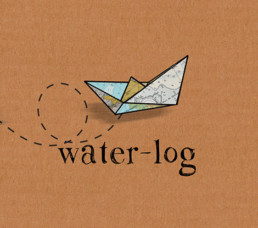Sometimes having a baby feels like damage control. You can easily spend a whole day consoling your howling infant from their latest fall, pre-emptively snatching away all the tempting unsuitable objects that they manage to get their sticky hands on or spending a good hour jiggling, rocking and crooning your little one to sleep for a much needed nap only to have them awaken red-faced and tear-stained only moments later.
Sometimes having a boat is the same thing.
We pushed off confidently from the shores of Mexico happy in the knowledge that we were crossing the Pacific ocean at just the right time of year, along a well-trodden route and doing what is in fact the norm for hundreds, even thousands of other sailors. Ah, trade-wind sailing, how we were looking forward to experiencing it again as it has been years since we last felt that lovely consistent downwind push that makes sailing in the trades so easy and pleasurable.
And then comes the child. Not our child, I hasten to add, but el niño, the child who we hadn’t planned on accompanying us across the Pacific.
El niño is the name given to the periodic warming of the Pacific Ocean along the equator which causes major shifts in the weather patterns across the globe. Normally, in a non el niño year, the trade winds both north and south of the equator produce a west-flowing push of the top layer of warm water towards the western Pacific basin. This gets replenished by colder waters from deeper below the ocean surface, that come up along the coast of South America. The temperature difference drives the atmosphere and winds to follow the same pattern, resulting in a steady cold to warm movement of winds, reinforcing the trades blowing from east to west.
But, every three to seven years, at irregular intervals, this cycle get disrupted and the trades weaken. The feebler prevailing winds can’t push the warm water far enough westwards so it builds up further and further east, continuing the cycle that drives the winds to become more insubstantial and flukey. The cooler waters can’t move upwards from the coast of Peru and the whole system is stuck in this pattern for around six months to a year.
Upon leaving Mexico the prediction for 2014 was that there was a minimal chance of this being an el niño year. However, once we arrived in French Polynesia, the probability had shot up to over 70%. My “Pacific Crossing Guide” helpfully states about el niño that should one be occurring you might want to put off your Pacific crossing for another year. Alas, it’s not such helpful advice once you’re already mid-ocean.
Much like our parenting strategy on witnessing the sudden transition from a calm baby who sits and observes the world around her to one who is all at once mobile in every possible direction; crawling, climbing, standing and cruising all over the place, our sailing policy in these waters has become one of rolling with the punches. Big seas, inconsistent winds and sudden onset squalls may not have been our chosen order from this vast ocean’s menu but it’s what we’ve been given and, like it or not, there’s six or seven thousand miles to cover before we’re safely tucked in for the next storm season.
Does any parent relish the times their child is teething, fussy, grumpy or unsettled? No. But, like any good sailors, we’re learning, we’re trying and it’s keeping us fulfilled.
